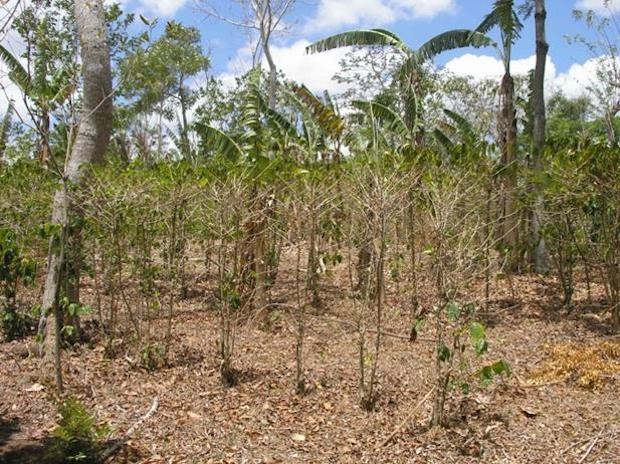While Peru prepares for El Niño & potential flooding, many coffee regions are experiencing drought conditions which are affecting crop results, not just in coffee, but in other farm products.
Via Roast magazine:
It is no secret that the current El Niño phenomenon has caused drought in the global coffeelands, particularly Central America, the Caribbean, and East Africa. Drought conditions in Central America and the Caribbean are occurring for the second consecutive year, wreaking havoc on cash crops, food staples, and livestock.
Satellite-derived rainfall estimates indicate that the first half of the rainy season (June-August) was the driest in 35 years. On our family farm, September is normally the greenest and most vibrant for our three story shade canopy and coffee plantation. This year, soil moisture was undetectable, trees were defoliating and even the weeds were dying in what is normally the rainiest month of the year.
What are the implications of this punishing drought for coffee farmers? There are many, but I will mention four of the most significant.
Hunger Most smallholder coffee farmers also plant corn and beans for family consumption. Farmers experienced 50 percent staple crop loss on average for the first planting season in Central America, and in many cases 100 percent losses, according to the Food and Agriculture Organization of the United Nations. That simply translates into less food on the table, as farmers have few if any reserves following a dry 2014. Surface water availability decreases and ground water tables go down, causing increased hardship for families to access water for household and agriculture use.
Lower coffee yields and less exportable quality Coffee farmers treasure the flowering season. For about one week, a sweet perfume aroma pervades the farm, the white flowers blanket the landscape like snow, and farmers get a glimpse of what their yield could potentially be if they do their work right and nature cooperates. Drought wreaks havoc on coffee flowering. If it doesn’t rain at the right time, or if it rains too much or too little, flowering is uneven at best and meager at worst.
Drought produces smaller beans of uneven size and lighter density. Beans of varying size grades are bad for specialty coffee roasters who need more uniformity to get an even roast. Smaller beans are usually not accepted as export quality for this reason, and farmers are forced to sell them at a lower price on the local market. The result is less exportable coffee volume, and less income in the pockets of farmers from coffee. Low yields combined with this year’s low coffee prices are a lethal combination, especially for farmers trying to recover from the 2014 drought.
Full Article: The Costly Effects of the Current Drought on Coffee Farmers | Daily Coffee News by Roast Magazine
This Week – Apu Gourmet – 1 Pound – $15.95 Special $12.95
This is a great coffee from a well know cooperative – Cenfrocafe in the Jaen/San Ignacio area of northern Peru. We were fortunate to obtain a small lot this year. We’ve been loving this coffee for years; it’s mostly enjoyed in Japan by coffee connoisseurs there.
[wp_cart_display_product name=”Apu Gourmet” price=”12.95″ shipping=”0.0001″ var1=”Grind|Whole Bean|Please Grind” thumbnail=”http://alittlefurthersouth.com-content/uploads/2015/07/Peru_CENFROCAFE_logo.jpg”]
[show_wp_shopping_cart]
===
© 2015 Ben Gangloff
You might also enjoy:
Three Reasons Why You Should Drink Direct Market Coffee
What! Jungle Oddity – A European Style Castle in the Cloud Forest
Number of Foreigners Coming to Peru for Work Grew 800% in the Last Decade
Curibamba Coffee Workshops June 2015
Did you enjoy this page? Have questions? Would like information on something to be posted here? Please drop us a line, or sign up for our email list in the box to the right.
